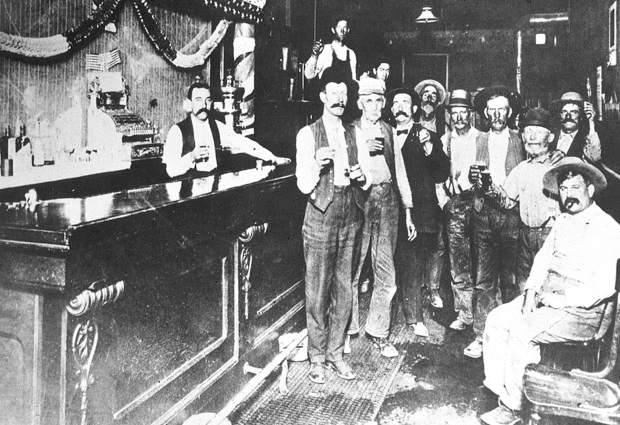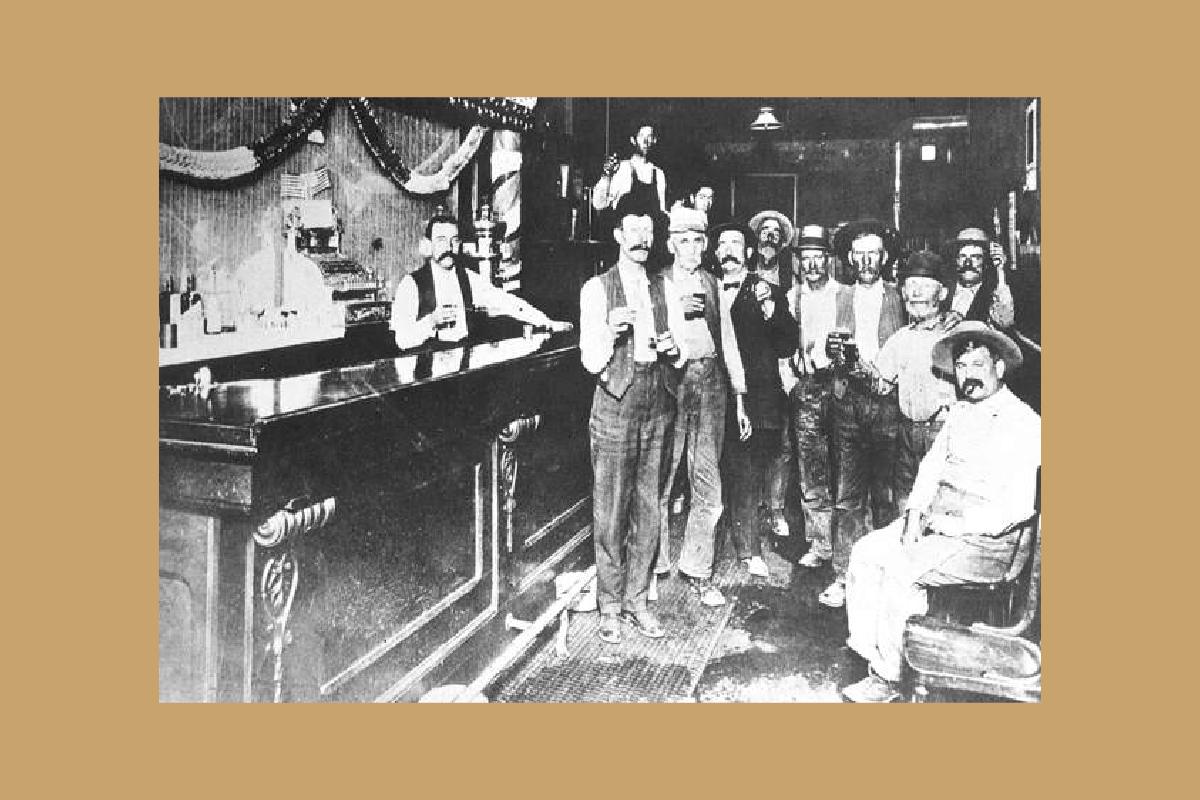
The water in many areas of the West was so bad it was said the local beer was healthier and safer than the local drinking water. The shelf life of beer is short and the cost of transporting it was prohibitive. This led to the building of local breweries. Selling at about 10 cents a glass, saloons served up volumes of beer, but in those days in warmer climes the beer was never ice cold, usually served at 55 to 65 degrees. Though the beer had a head, it wasn’t sudsy as it is today. Patrons had to knock back the beer in a hurry before it got too warm or flat.
It wasn’t until the 1880’s that Adolphus Busch introduced artificial refrigeration and pasteurization to the U.S. brewing process, launching Budweiser as a national brand. Folks were accustomed to the European tradition of beer served at room temperature. Folks in the Old West didn’t expect their beer to be cold,
Beer was not bottled widely until pasteurization came in 1873. Up to then it was mostly kept in kegs.
In some parts of the West they had ice cold beer. German brewers like Adolph Coors set up business in the earliest days of the Colorado mining camps and cow towns. Ice plants in western towns began cropping up as early as the 1870s. Earlier, they’d cut ice from frozen rivers in the winter and store it underground during the summer to keep the brew cool.






